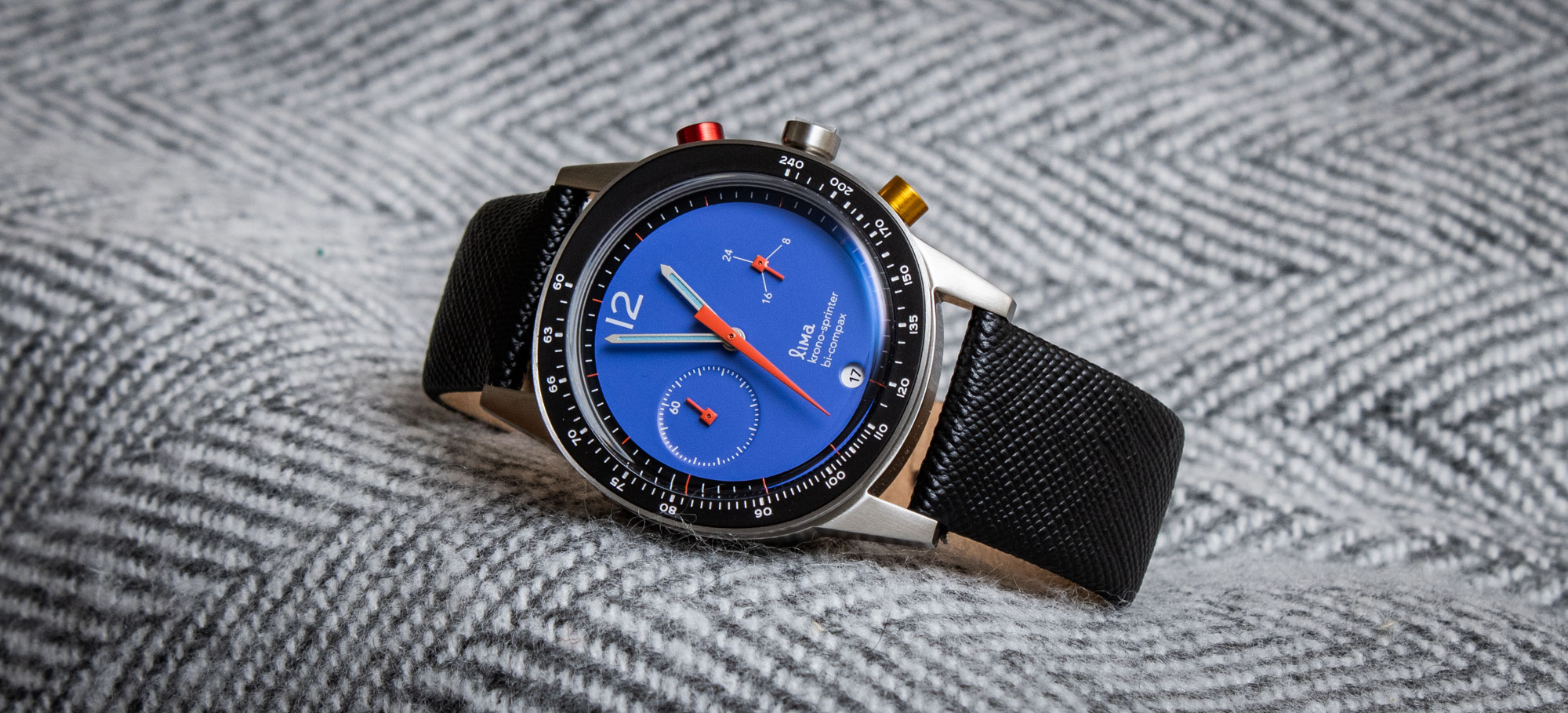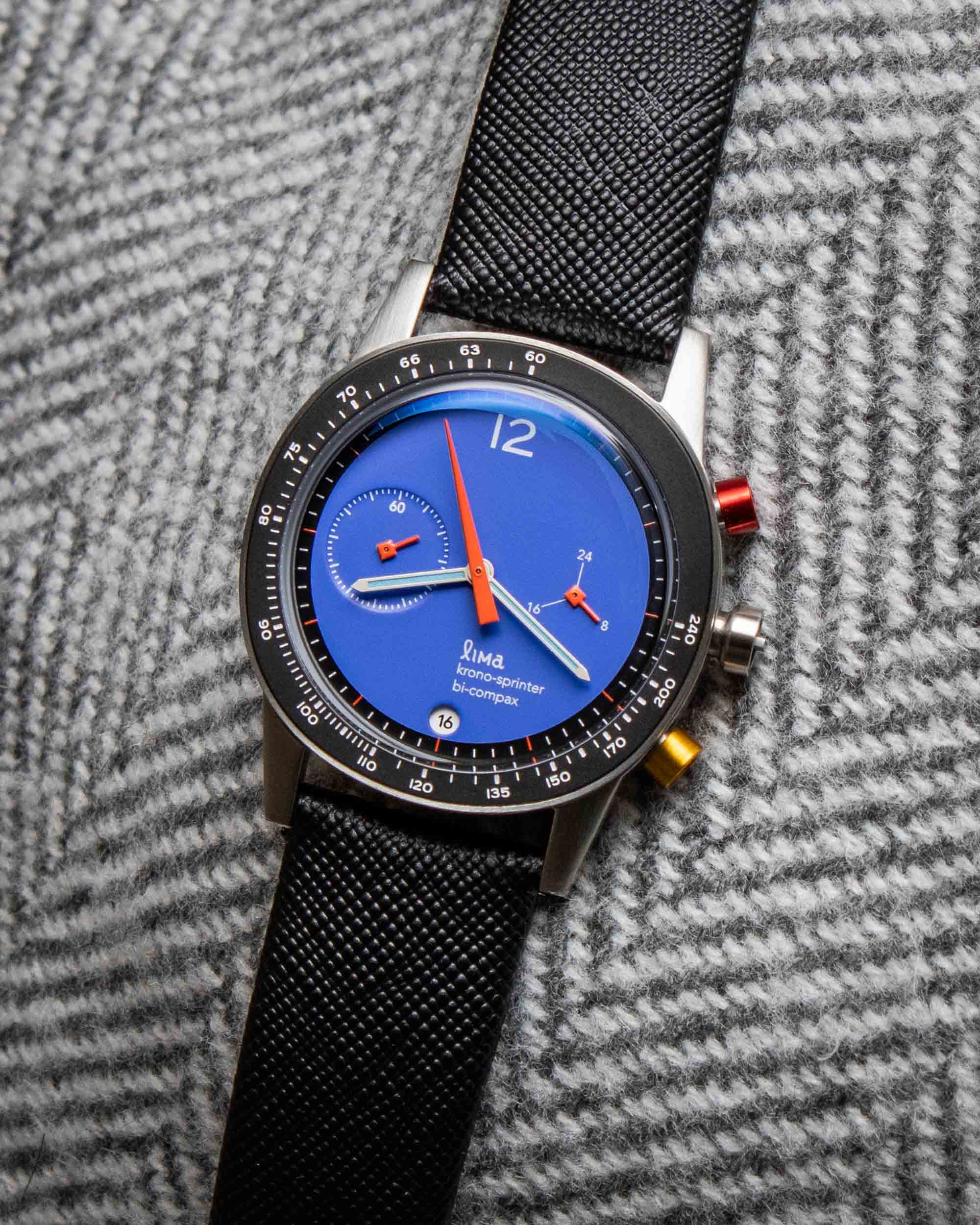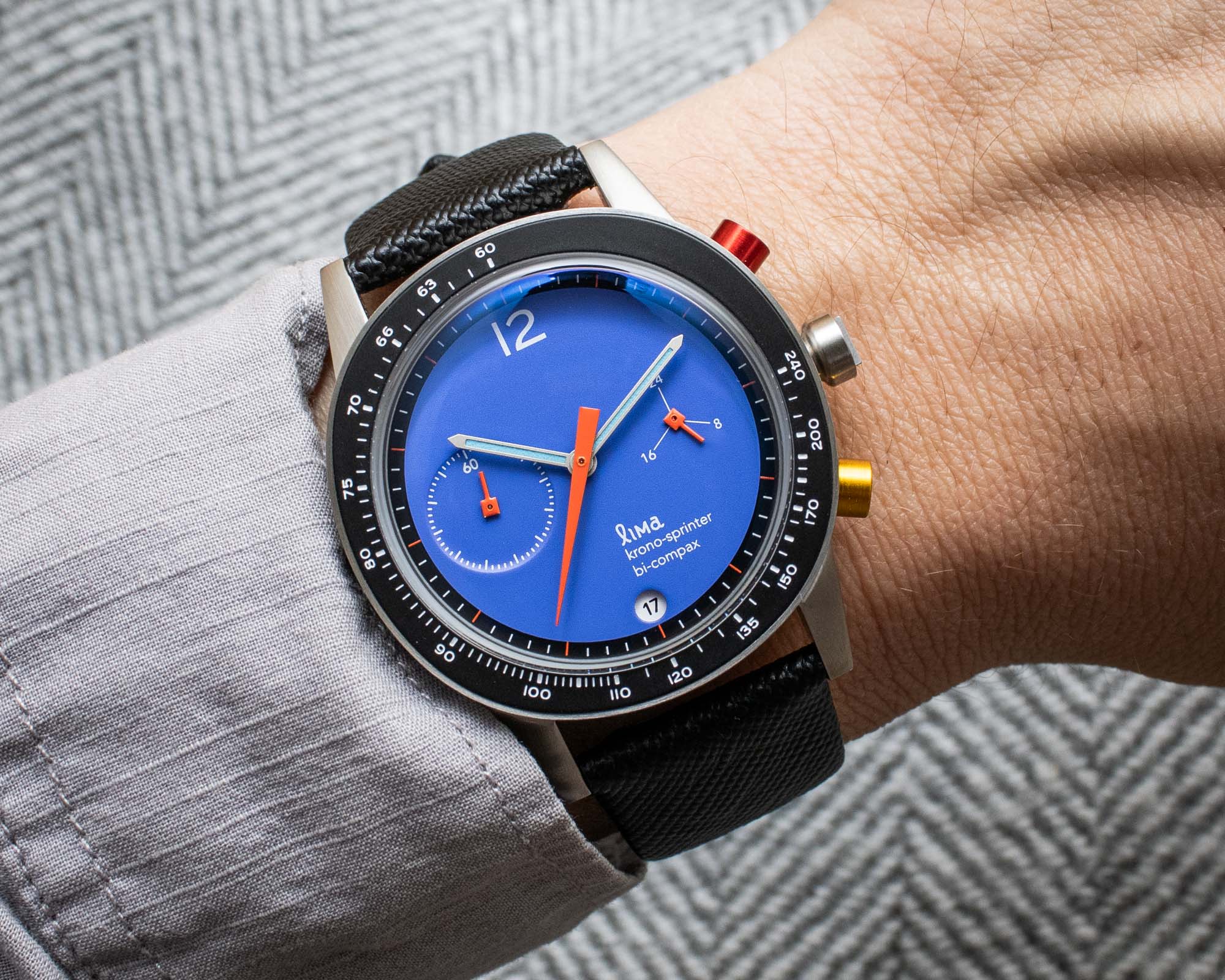
In many ways, the price of a MoonSwatch now serves as somewhat of an unspoken standard for what constitutes a fun and trivial horological purchase. Regardless of your personal opinion about this mega-famous Swatch Group collaboration, it has been a colossal success by all standards, and its enduring popularity serves as proof that millions of people all around the world are willing to pay hundreds of dollars for horological novelties, simply because they like their designs and the concepts behind them. However, for less than the price of a MoonSwatch, you can get yourself an example of the Lima Kronosprinter, which is a colorful meca-quartz chronograph with a proper stainless steel case that offers a significantly more elevated ownership experience.

Founded in 2014 by multimedia designer Herman Tantriady, Lima is a small-scale independent brand based in Indonesia that specializes in affordable design-focused timepieces. Not all of Lima’s watches are entirely my cup of tea, although some of its more sporty and esoteric collections such as the Meca and Kronosprinter are quite a bit more in line with my preferences. Among the models that form Lima’s lineup, the Kronosprinter is its colorful meca-quartz chronograph inspired by Bauhaus principles and the style of industrial designer Dieter Rams, who famously helped create watches (and many other products) for the German company Braun. In terms of its overall appearance, the Lima Kronosprinter represents a blend of both vintage and modern design elements, with the net result being a compact and colorful chronograph that very much has its own aesthetic identity.
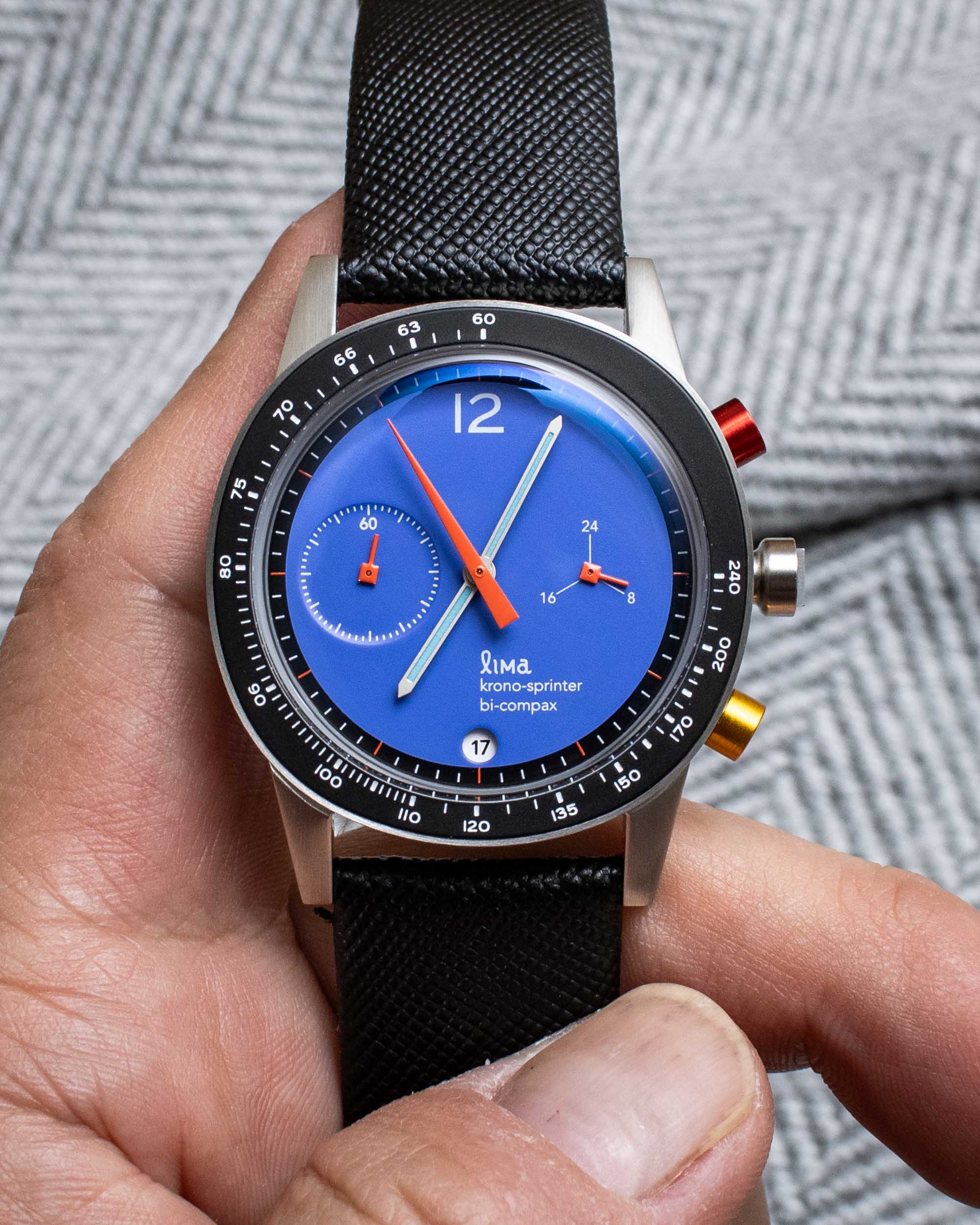
One quick note about the Lima Kronosprinter before we get into the meat of the article itself: You may notice that there are two different spellings for the name of the watch. Although the dial says “Krono-Sprinter” (with a hyphen), the caseback spells the model name as a single word, and I also see the one-word approach of “Kronosprinter” used exclusively on the brand’s official website. While I’d normally be inclined to defer to whatever appears on the actual dial, Lima has confirmed that the preferred spelling for the model is the one-word approach, although you very well might also see watches from this collection called the “Lima Krono-Sprinter” elsewhere online. Is this minor discrepancy probably just due to a misprint on the dial? Almost certainly, although there are numerous other words in the English language that can be spelled with or without a hyphen, and I’m entirely happy to look past this small detail given everything else this watch delivers for its modest price.
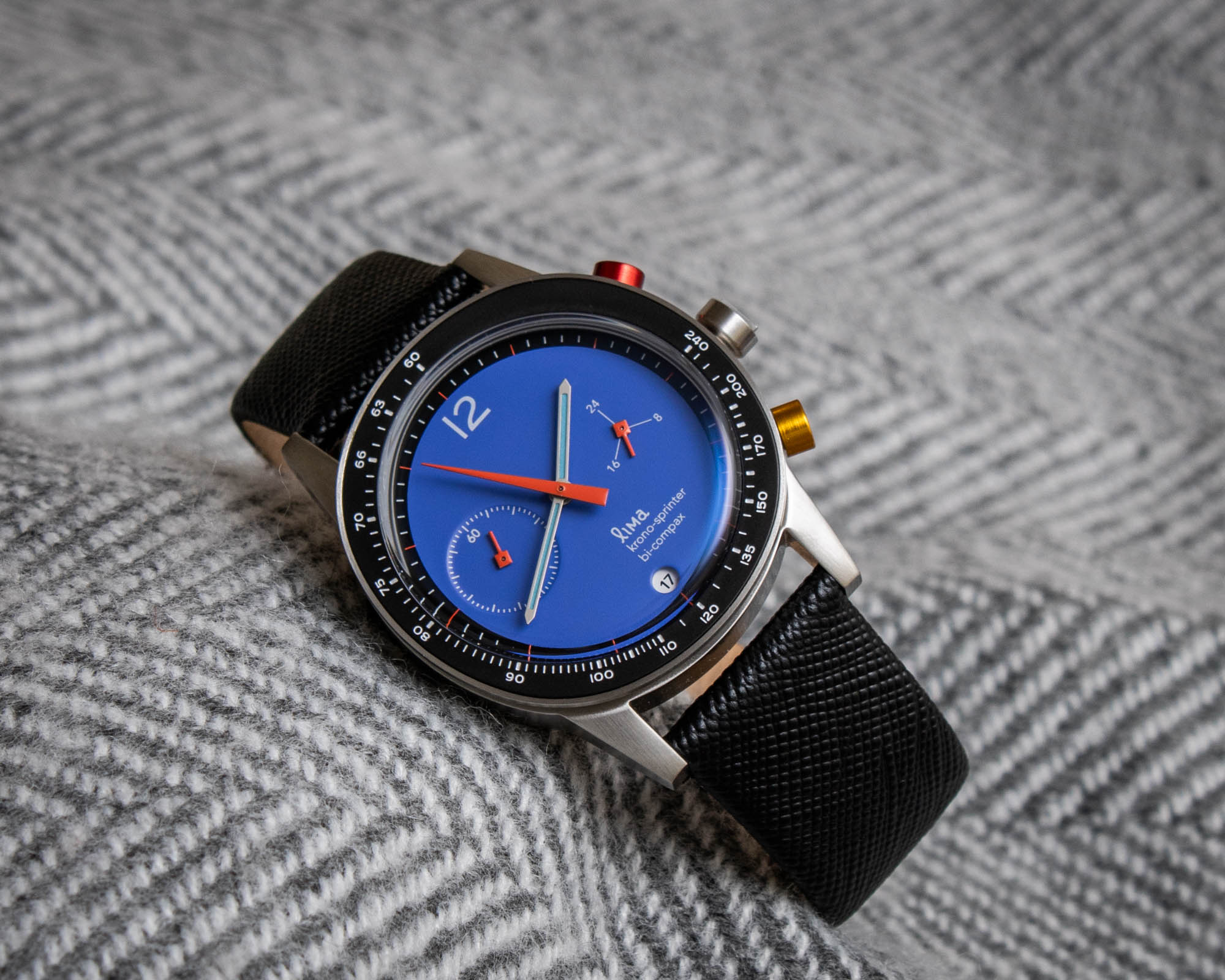
As for the watch itself, the case of the Lima Kronosprinter is crafted from brushed 316L stainless steel, and rather than featuring a traditional round profile like most wristwatches, the case shape is a mix between a square and a circle (which Lima calls a “squircle”). The unusual “squircle” shape extends to the Kronosprinter’s fixed external bezel, which includes a black insert with a white tachymeter scale. In terms of its dimensions, the case of the Lima Kronosprinter measures 37mm in diameter by 10mm thick, with 20mm lugs and an overall lug-to-lug profile of 45mm. However, once you factor in the additional height of the double domed K1 crystal that sticks up above the rim of the bezel, the true thickness of the watch ends up being closer to 12mm when measured with digital calipers from its tallest point at the center of its domed crystal.
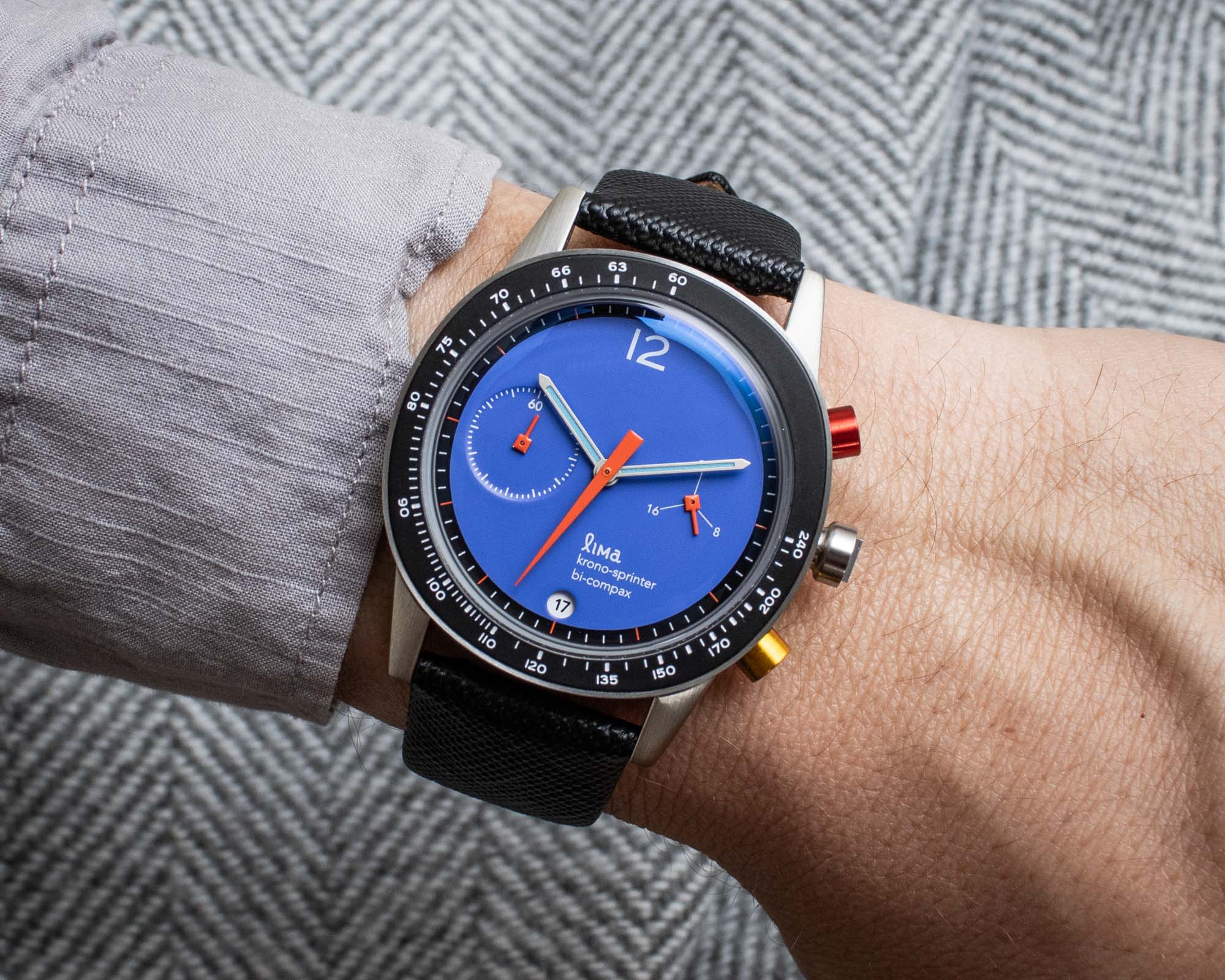
The use of K1 for the crystal is one detail that I would change about the Lima Kronosprinter, although crystal material is never all that much of a deal-breaker for me when it comes to watches that are this reasonably priced. When brands opt for acrylic crystals, it can often be specifically due to their retro appearance, or even occasionally due to the performance properties of the material itself. However, whenever a brand chooses a K1 crystal, it is typically done for cost-cutting reasons, as K1 is quite a bit less expensive than sapphire, especially if a domed shape is required. K1 is a special type of hardened mineral glass, and while it is supposed to be slightly less prone to shattering than sapphire, it is also quite a bit less scratch resistant. Any minor levels of additional impact resistance isn’t going to be a factor on a design-focused watch like the Lima Kronosprinter, and I can almost guarantee that most buyers would prefer a sapphire crystal for its superior ability to resist superficial blemishes.
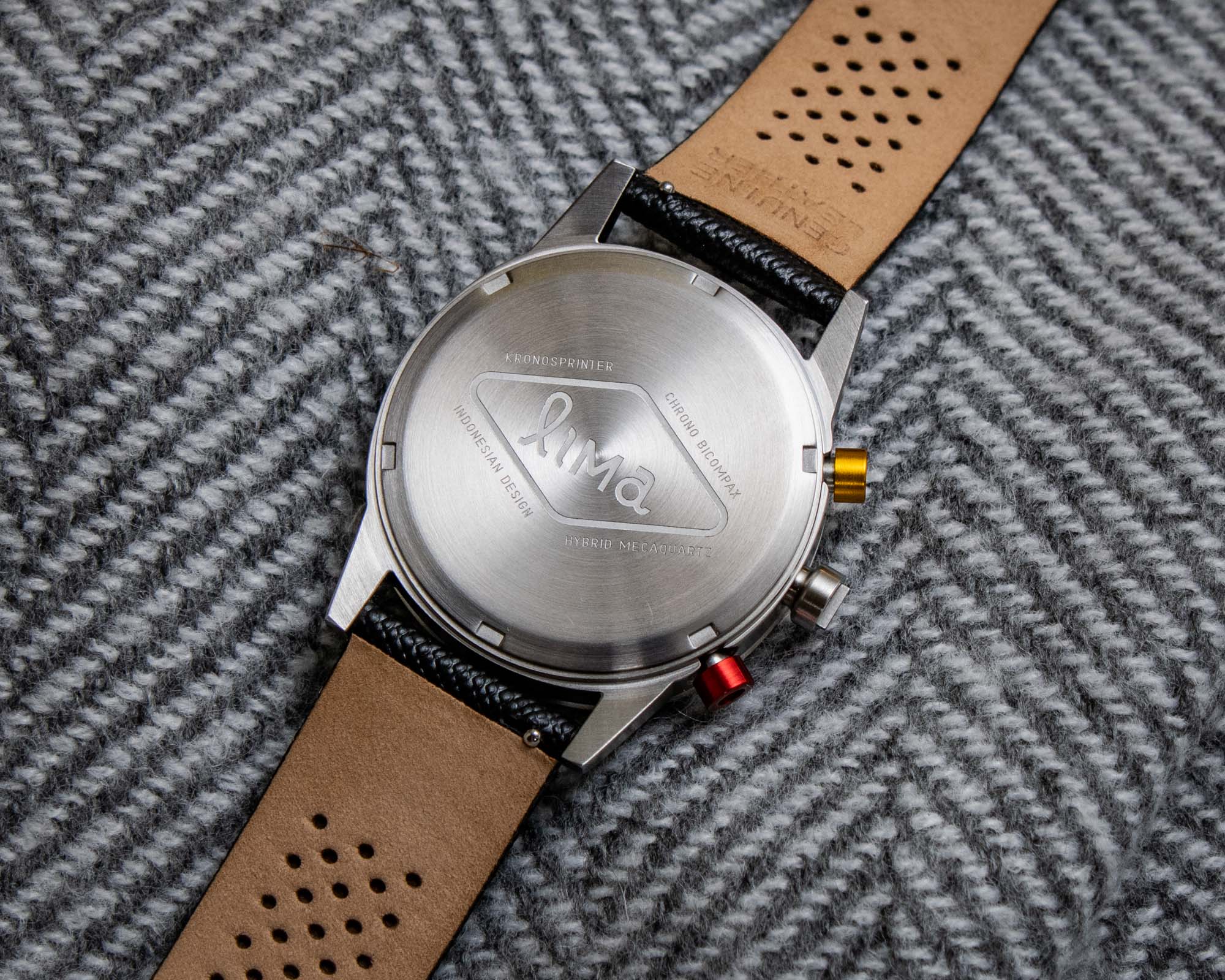
The reverse side of the Lima Kronosprinter receives a solid screw-down stainless steel caseback, while access to the movement is granted by a rather unusually shaped screw-down crown and a pair of brightly colored chronograph pushers. Rather than being signed with the brand’s logo and having some type of grooves or fluting for grip, the sides of the crown are completely smooth and the top is set with a small sand-blasted section, which includes a flat piece slightly protruding from the end that can be used to grip the crown whenever you need to unscrew it from the case. Meanwhile, the two pump-style chronograph pushers are color coordinated, with the upper start/stop pusher finished bright metallic red, while the lower reset pusher is a golden yellow color. Additionally, while it doesn’t state its depth rating anywhere on its dial or caseback, the Lima Kronosprinter offers 50 meters of water resistance to help protect against daily contact.
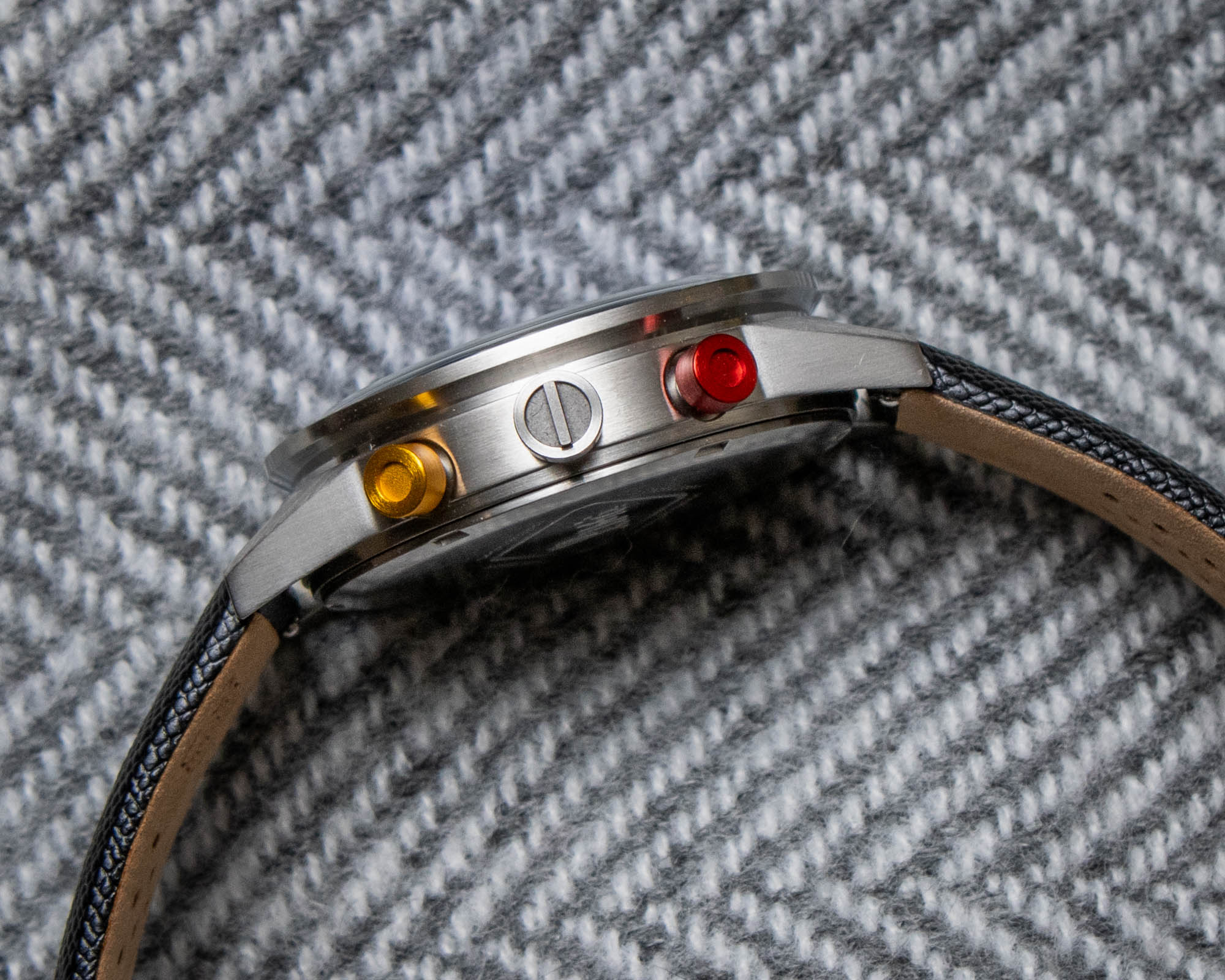
At the time of writing, Lima offers five dial variations for the Kronosprinter, although they all feature the same two-register layout with a circular date window at the 6 o’clock location. Colors include black, white, or blue, with the white and black colorways also available as “Newman” versions that forego the model’s colored chronograph pushers and instead feature contrasting 24-hour sub-dials with matching minute tracks. The blue version featured here offers a mix of traits found on both styles, and while it has the colored pushers and 24-hour register of the standard models, it also features the contrasting minute track from the “Newman” versions. Rather than featuring any type of hour markers, the Lima Kronosprinter relies solely on colored lines within its minute track to serve as its indexes, and this minimalist display combined with its brightly colored geometric handset provides the watch with an unusual and distinctly lighthearted overall appearance.
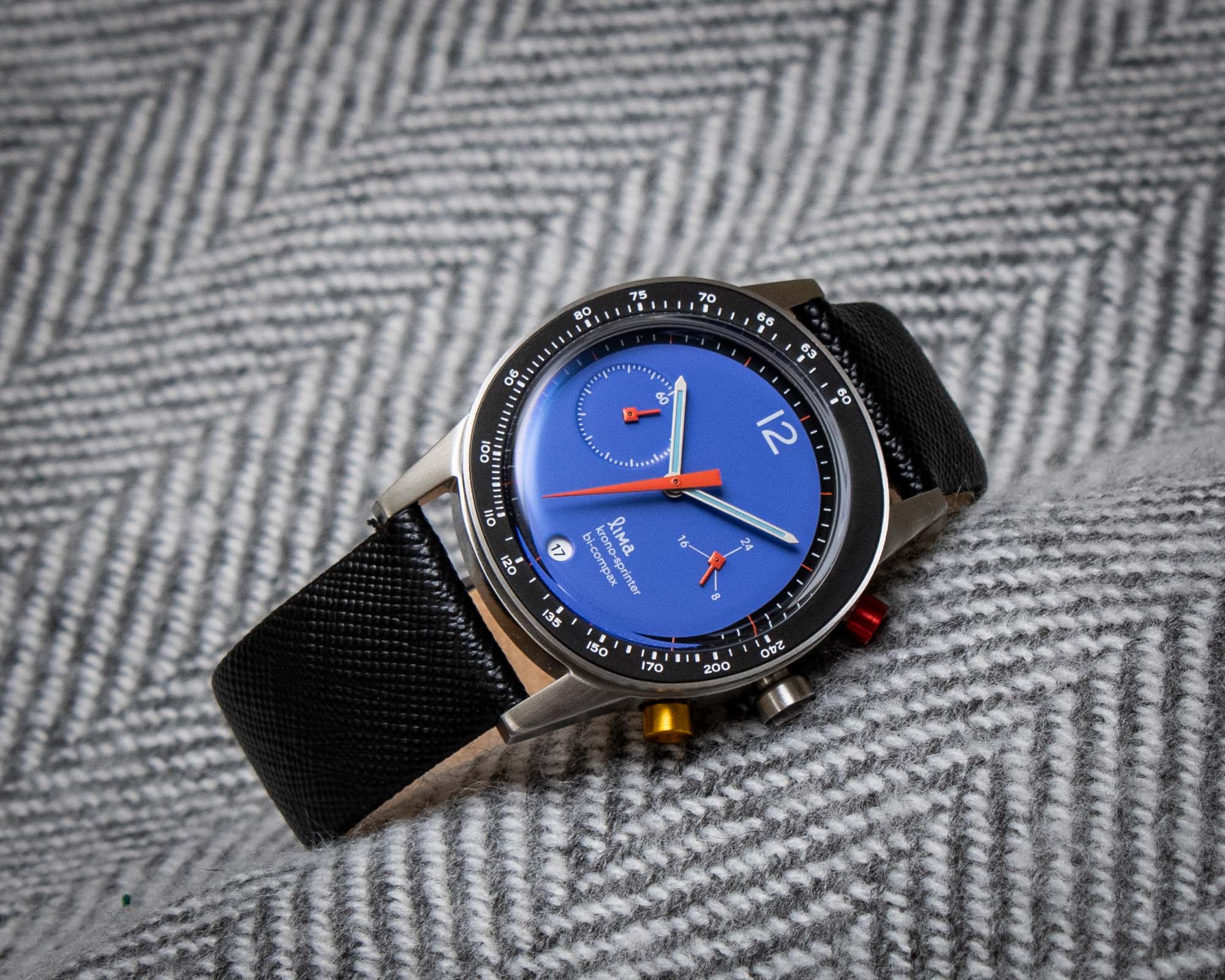
Given that the Lima Kronosprinter doesn’t really have any actual hour markers, the only luminous material that appears on the entire watch is the thin strips of turquoise colored lume that reside within its pencil-shaped hour and minute hands. Additionally, without any type of indexes to help serve as a reference point for the time-telling hands, I personally feel that the overall legibility of the watch would benefit from a slightly greater difference in size between the centrally mounted hour and minute hands. At the risk of being borderline pedantic about a truly budget-friendly timepiece, in addition to having a slightly shorter hour hand, I would also prefer to see the minute hand be a bit longer on the Kronosprinter, which would allow it to extend all the way to reach the markings of its minute track along the outermost periphery of the dial.
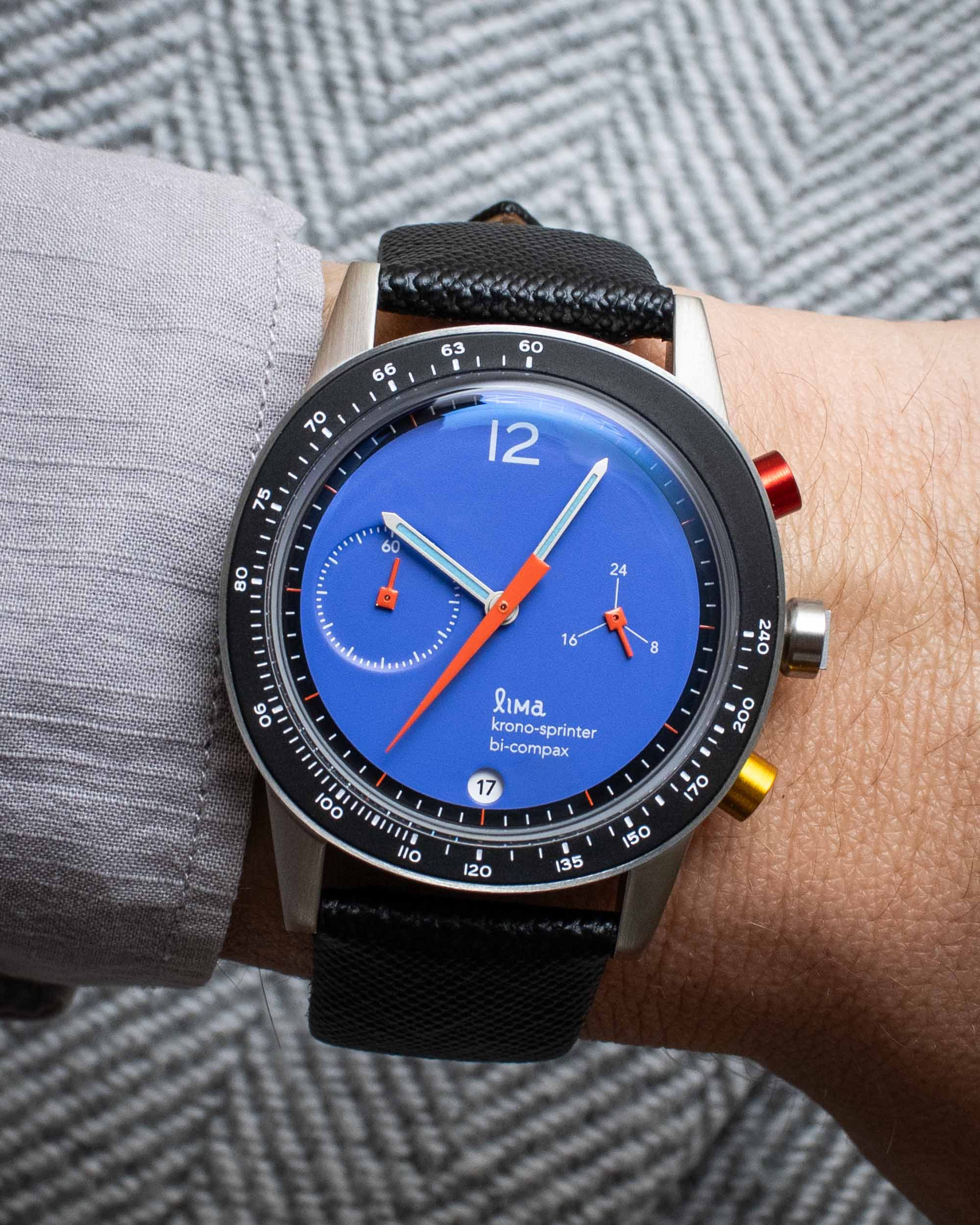
Powering the Lima Kronosprinter is the Seiko Caliber VK64 meca-quartz hybrid movement, which has become one of the go-to options for independent brands that are interested in producing affordable yet practical chronograph watches. As a hybrid meca-quartz movement, the Seiko VK64 pairs standard battery-operated quartz timekeeping technology with a mechanical module to operate the chronograph, and this allows it to benefit from the accuracy and convenience of quartz, while still offering the tactile pusher response and instant hand-reset action of a traditional mechanical chronograph. While the Seiko Cal. VK64 is very much still a quartz movement at its heart, the fact that the Lima Kronosprinter doesn’t have a running second hand means that you don’t have the constant once-per-second tick that is typically characteristic of quartz watches.
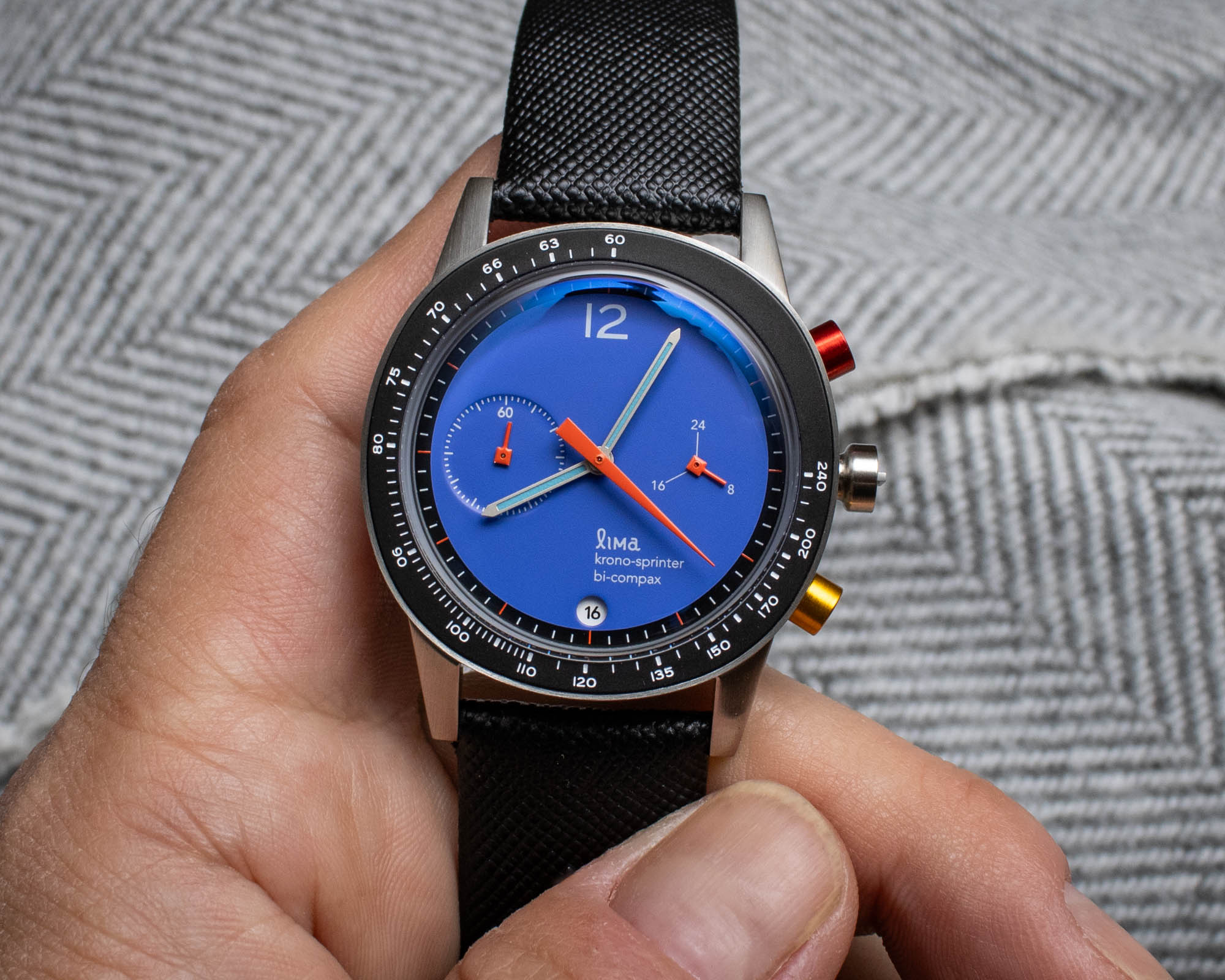
Many people like to criticize the MoonSwatch because it isn’t repairable or serviceable, although the Seiko meca-quartz Cal. VK64 really isn’t a movement that is going to ever be repaired or serviced when a brand-new replacement can be purchased for roughly the same price that many jewelry stores charge for a routine battery replacement. With that in mind, there is a big difference between putting a non-repairable movement inside a non-serviceable case, and using what is essentially a disposable movement to power a watch that can otherwise be repaired and maintained for the foreseeable future. While no reasonable watchmaker will ever actually spend their time fully servicing a Seiko VK64, the Lima Kronosprinter itself is hardly a non-repairable watch, and when replacing the battery finally fails to bring it back to life, you can simply install an entire replacement movement into the watch for a minimal out-of-pocket cost.
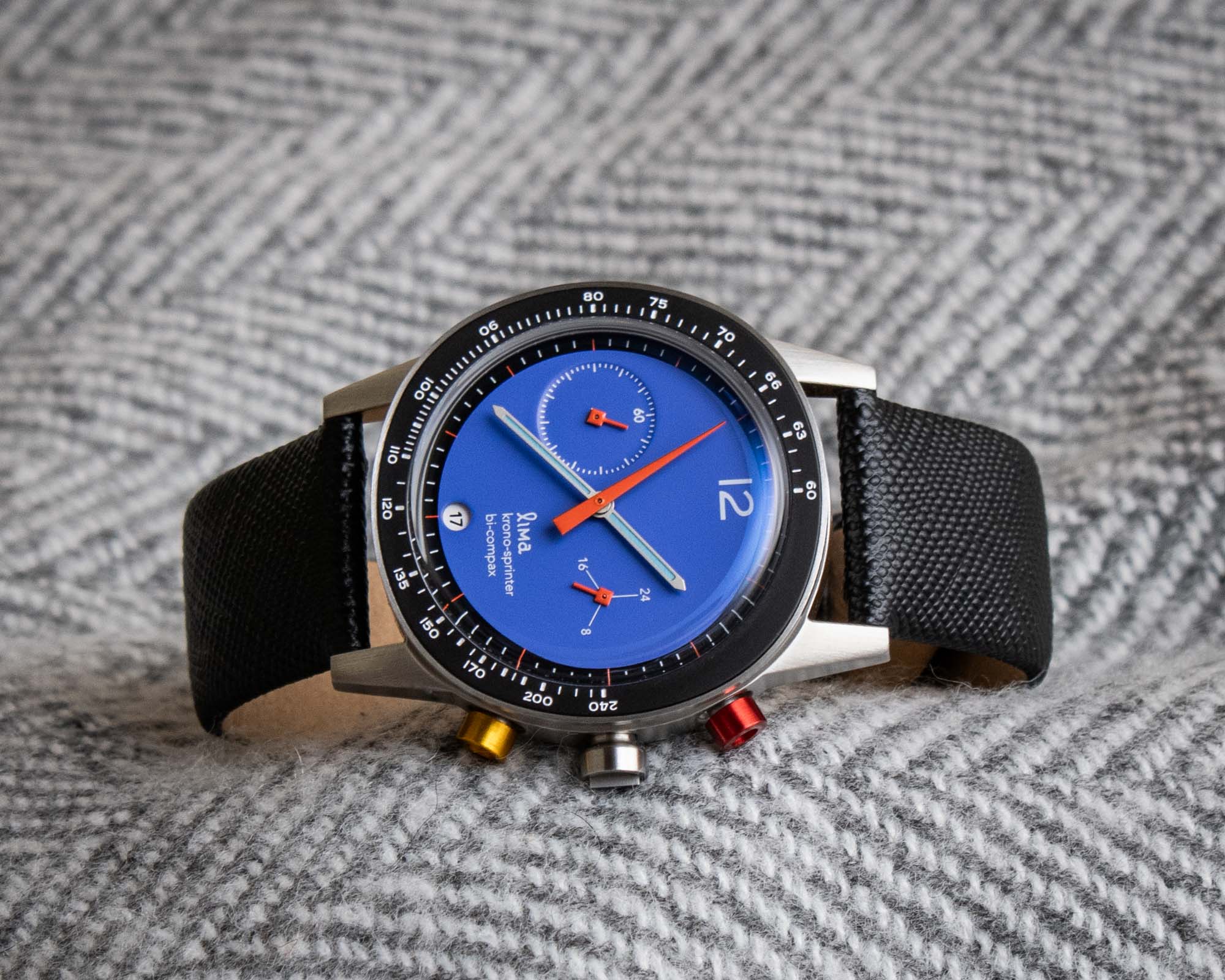
Regardless of dial color, all of the Lima Kronosprinter watches are fitted with black Saffiano leather straps that taper from 20mm at the case down to 18mm where they connect to their signed stainless steel pin buckles. Integrated quick-release spring bars are used to connect the ends of the strap to the lugs, while the internal surface features a partially perforated liner to help increase airflow and promote comfort. Although the actual material of the strap is slightly stiff and rigid right out of the box, it quickly conforms to the shape of the wrist and ultimately becomes rather comfortable to wear for extended periods of time. That said, while the included black Saffiano leather strap is an entirely acceptable option, it is also undeniably a bit inauspicious, and I imagine that most Kronosprinter owners will eventually be tempted to swap out the standard strap for an alternate option with a bit more comfort and aesthetic personality.
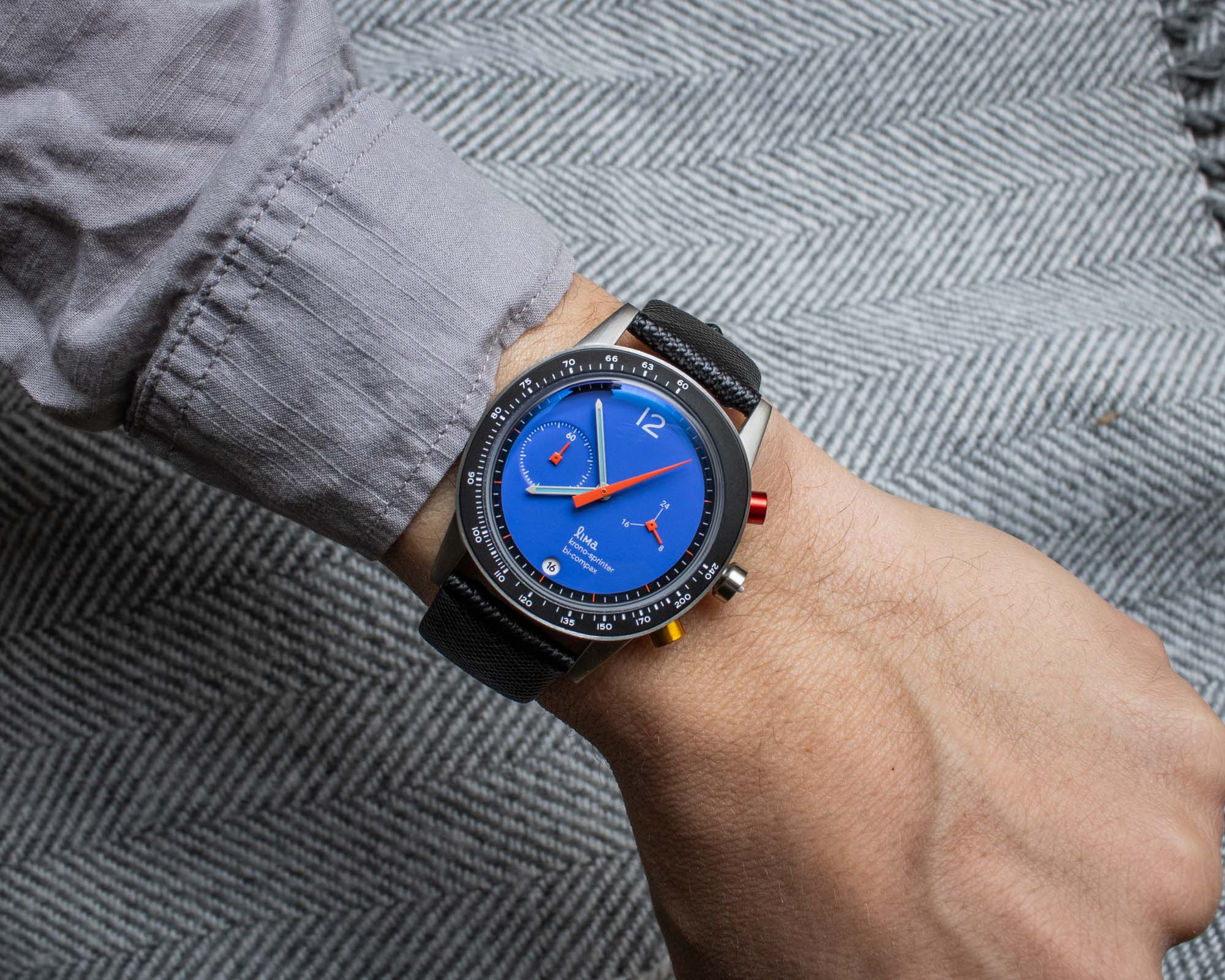
As watch enthusiasts, we often nitpick and critique timepieces about minor details such as the proportions of their hands or the material used for their crystals, but for individuals such as ourselves, these details are important. However, it’s also important for us to always try to maintain a sense of perspective when it comes to the truly affordable offerings within the industry. Small independent brands such as Lima don’t have the economies of scale to offer certain premium features while still maintaining a rock bottom price point, and even among the biggest names within the industry, you’d be hard pressed to find models with sapphire crystals or mechanical movements that retail for less than the price of a MoonSwatch. While the Lima Kronosprinter isn’t completely perfect, it feels surprisingly well constructed for its price, and above all else, it offers a truly fun and unique design that isn’t so overtly colorful or outlandish that it can’t easily serve as a person’s everyday timekeeping companion.
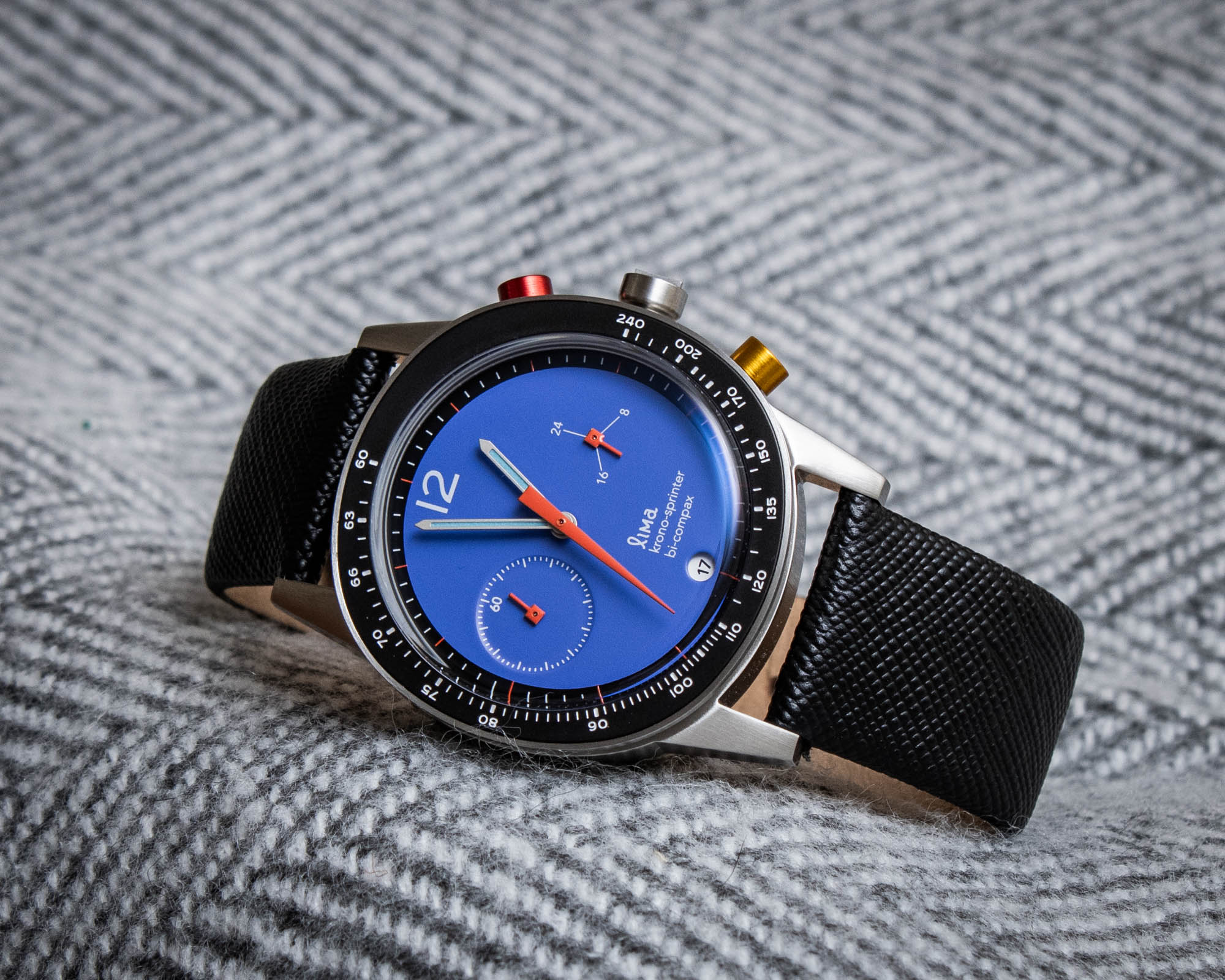
At the time of writing, the official retail price for the Lima Kronosprinter is USD 260, which places it firmly on the affordable side of the watch enthusiast landscape, and this even makes it ten bucks less expensive than the current 2024 price of a MoonSwatch. Additionally, while this batch of Kronosprinter watches all sold out during the holidays, Lima has said that a restock is already in the works and will be available to buyers within the next few months. Between its compact case profile, well-executed construction, and unusual Bauhaus-inspired design, the Lima Kronosprinter ultimately represents a rather compelling value proposition when it comes to budget-friendly horological indulgences, and it makes a great option for someone who wants a colorful and affordable chronograph that still offers a proper stainless steel case and a fairly elevated overall ownership experience. For more information on the Lima Kronosprinter, please visit the brand’s website.

